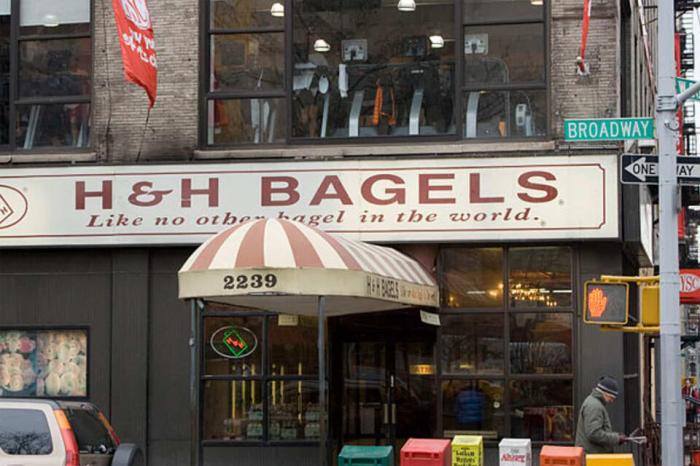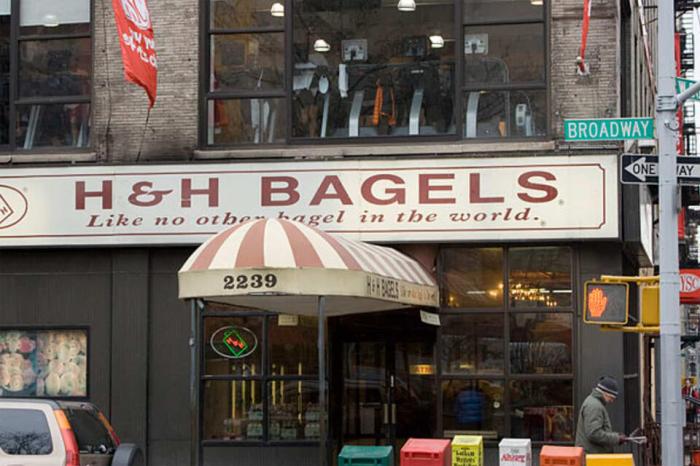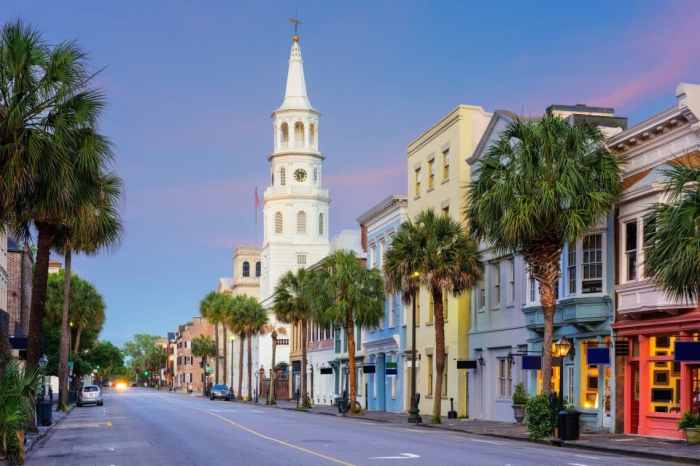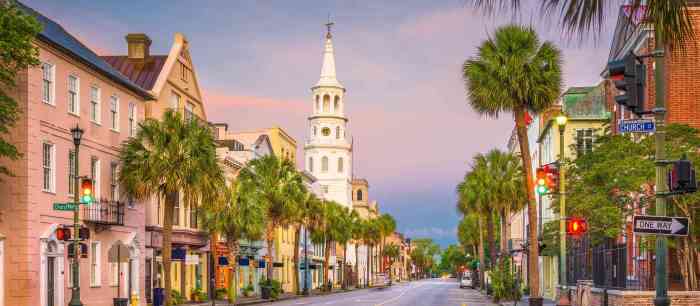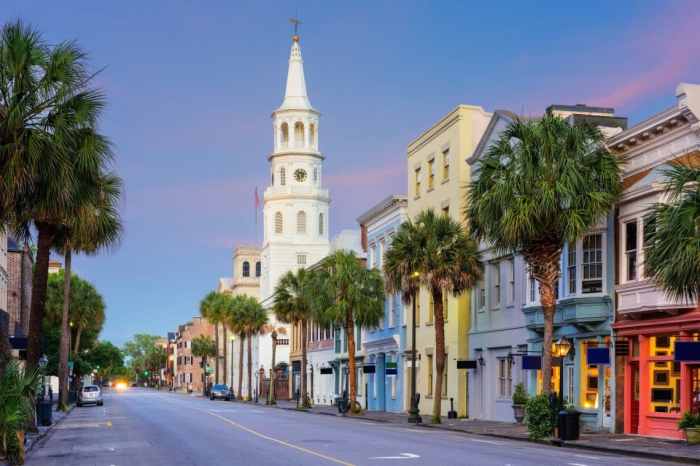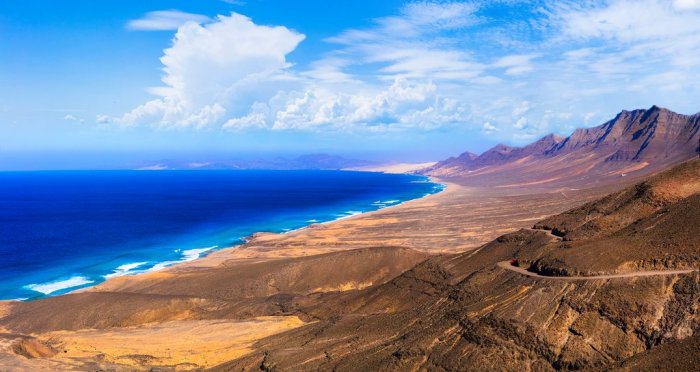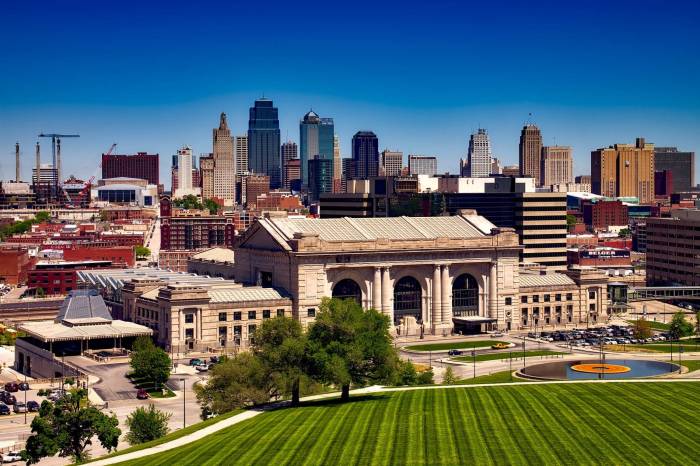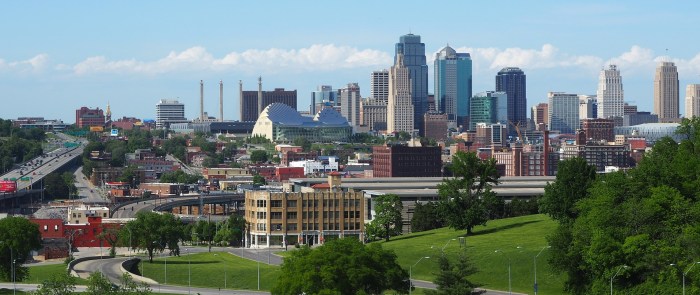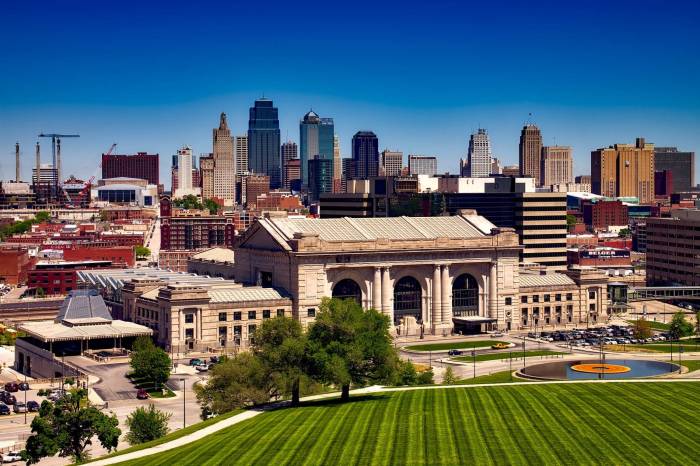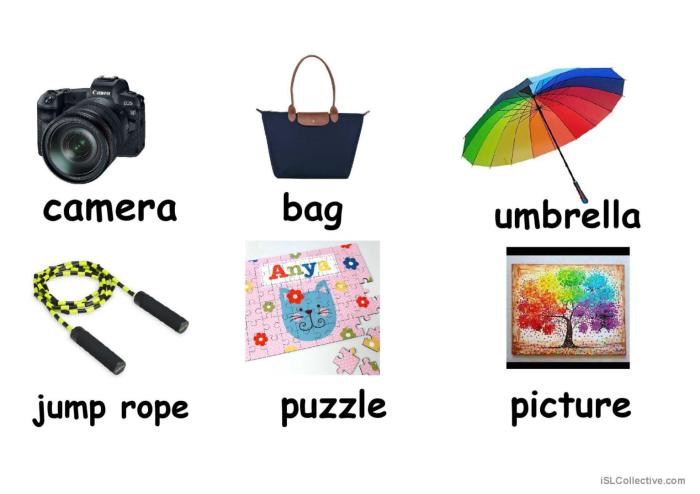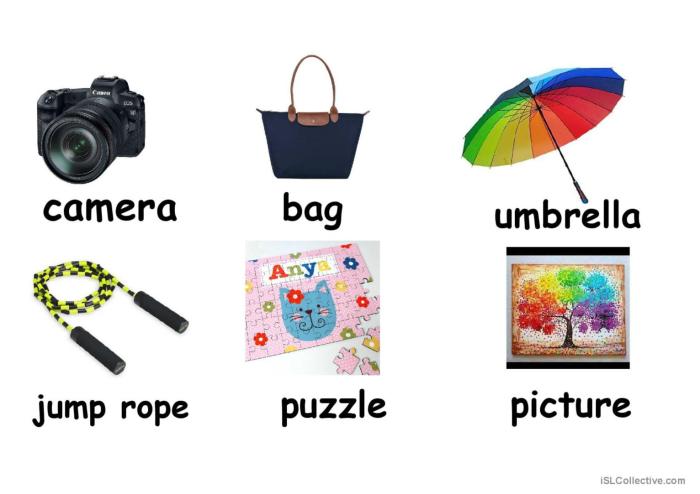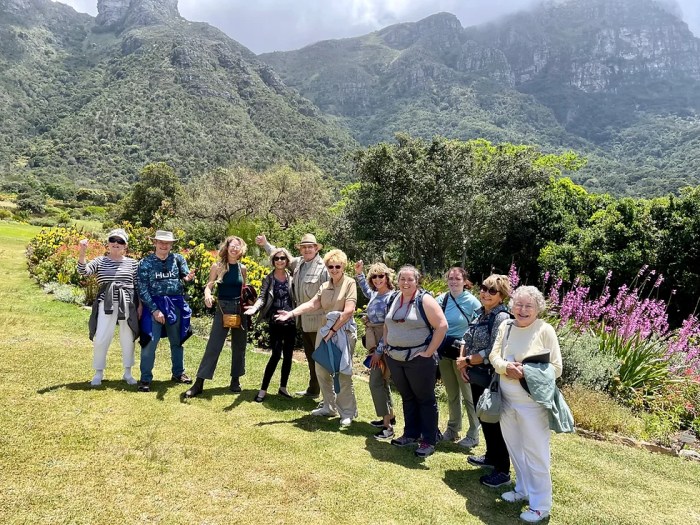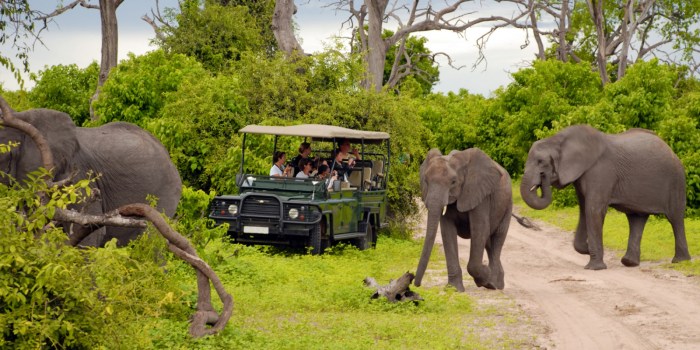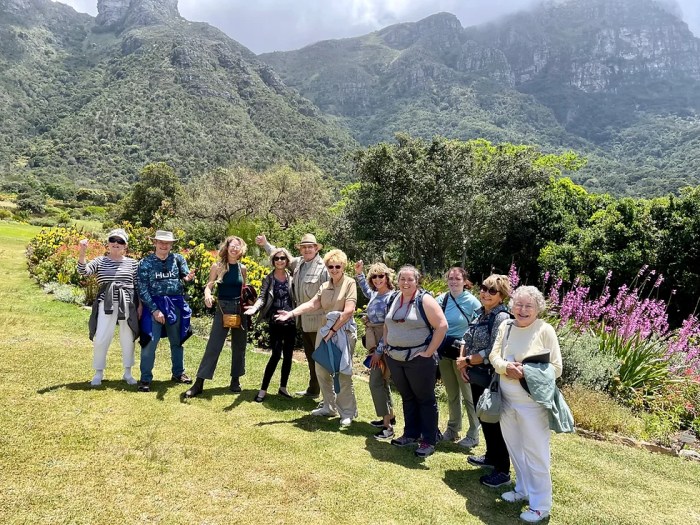Things to know before traveling to Seattle: Seattle, a city known for its stunning natural beauty and vibrant culture, awaits your exploration. Prepare for a unique experience with this comprehensive guide. From navigating the unpredictable weather to discovering hidden gems, this guide offers essential insights to help you plan the perfect trip.
This detailed guide covers everything from the city’s diverse culinary scene and transportation options to must-see attractions and practical information for a smooth and unforgettable Seattle adventure.
Weather & Seasonality
Seattle’s weather is famously unpredictable, but understanding its patterns is key to a fantastic trip. It’s often described as “the rain city,” but that’s a somewhat misleading simplification. While precipitation is a factor, Seattle’s climate offers a unique charm, and its mildness, compared to other major US cities, is a significant draw. The region’s proximity to the Pacific Ocean moderates temperatures, leading to a distinctive experience.Seattle’s climate is significantly influenced by its location on Puget Sound.
The presence of the Pacific Ocean keeps summers cool and winters mild. This characteristic sets it apart from other major US cities, where temperature swings are often more dramatic. The weather plays a crucial role in determining the best time to visit for specific activities, like hiking or exploring the outdoors.
Seasonal Variations
Seattle’s weather exhibits distinct seasonal variations. Spring brings pleasant temperatures and a noticeable decrease in rain, creating a beautiful transition from winter’s dampness. Summer is characterized by cool temperatures, frequent fog, and occasional rain showers. Autumn offers a vibrant display of colors and a continuation of the moderate temperatures. Winter, while marked by frequent rain, is generally mild, and the city’s beauty is enhanced by the seasonal atmosphere.
Monthly Weather Conditions
Understanding the typical weather conditions for each month is vital for planning outdoor activities.
- January: January typically features the lowest temperatures of the year, with average lows often dipping below freezing. Expect frequent rain and potentially some occasional snowfall, which can significantly impact outdoor activities like hiking or exploring the city by foot.
- February: February often brings a continuation of the mild winter weather, with temperatures fluctuating around the freezing mark. Rain remains a possibility, though it may not be as frequent as in January. This is an excellent time to explore the city’s indoor attractions and anticipate fewer crowds compared to peak seasons.
- March: March marks the beginning of spring, and temperatures start to rise. Rain showers are still possible, but they tend to decrease in frequency. This is a time for venturing outdoors more often, with the potential for some pleasant days.
- April: April continues the trend of increasing temperatures and decreasing rainfall. Outdoor activities become more appealing, and the city comes alive with a burst of spring energy.
- May: May offers the pleasant weather that Seattle is known for. Expect warmer days and fewer rainy days, making it an ideal time for enjoying outdoor activities like picnics and walks in the park.
- June: June typically sees the warmest temperatures of the year, though they are still moderate compared to other US cities. Expect sunny days and fewer rain showers. Outdoor events and activities are abundant, and the city’s charm is at its peak.
- July: July’s weather continues the trend of warm days and occasional rain. Temperatures can be comfortable for outdoor activities. The city’s atmosphere is lively, and you can expect more visitors.
- August: August typically follows a similar pattern to July, with warm days and occasional rain. Expect pleasant weather for enjoying outdoor activities.
- September: September sees the transition to autumn, with slightly cooler temperatures and the potential for more frequent rain showers. The beautiful fall foliage starts to emerge, creating a picturesque backdrop.
- October: October is a transition month, with temperatures continuing to cool and rain becoming more frequent. The city’s beauty is enhanced by the changing colors of the trees.
- November: November marks the start of the winter season, with temperatures dropping further and rain becoming more prevalent. The city is enveloped in a crisp autumnal beauty.
- December: December typically features the coldest temperatures of the year, with frequent rain and potential for snowfall. The city is wrapped in a winter wonderland atmosphere.
Impact on Outdoor Activities
The weather significantly influences the types of outdoor activities that are feasible. During periods of heavy rain or snow, many outdoor excursions may need to be adjusted or canceled.
Comparison to Other US Cities
Seattle’s climate stands out compared to other major US cities. While cities like New York or Chicago experience more significant temperature fluctuations, Seattle’s moderated climate is a distinct advantage. The consistent mildness and proximity to the ocean make it a unique destination.
Average Monthly Temperatures and Rainfall
A comparison of average temperatures and rainfall for each month provides a clearer picture.
| Month | Average High (°C) | Average Low (°C) | Average Rainfall (mm) |
|---|---|---|---|
| January | 8 | 4 | 120 |
| February | 9 | 5 | 110 |
| March | 10 | 6 | 100 |
| April | 12 | 7 | 90 |
| May | 15 | 9 | 80 |
| June | 17 | 11 | 70 |
| July | 18 | 12 | 60 |
| August | 17 | 11 | 65 |
| September | 16 | 9 | 75 |
| October | 14 | 7 | 90 |
| November | 12 | 5 | 100 |
| December | 9 | 4 | 110 |
Transportation & Getting Around
Seattle boasts a vibrant and interconnected transportation network, catering to diverse needs and preferences. Navigating the city, whether you’re exploring the iconic Pike Place Market or venturing to the Olympic Mountains, is surprisingly smooth thanks to a blend of public transit, ride-sharing, and personal vehicles. Understanding the nuances of each option can significantly enhance your Seattle experience.Seattle’s transportation system offers a good mix of options, from the efficiency of its light rail to the convenience of ride-sharing apps.
However, the best approach depends heavily on your destination and travel style. Knowing the strengths and weaknesses of each method empowers you to choose the most effective and enjoyable way to traverse the city.
Public Transportation
Seattle’s public transportation system, primarily managed by King County Metro, is extensive and generally reliable. It includes buses, light rail, and the Link light rail system. The light rail lines connect key areas of the city, providing a relatively quick and efficient way to travel between downtown, the University District, and the International District.
- Pros: Cost-effective for frequent travelers, reduces reliance on personal vehicles, often faster than driving during peak hours, and environmentally friendly.
- Cons: Route schedules and frequencies may vary depending on the time of day and location, and sometimes can be slower than driving in certain areas, especially during off-peak hours.
Seattle’s public transportation is generally well-integrated with other major US cities, although the specifics of each city’s system differ in terms of cost, frequency, and coverage.
Ride-Sharing Services
Ride-sharing services like Uber and Lyft are readily available in Seattle, offering a flexible and convenient alternative to public transit. They’re especially useful for getting to areas not directly served by public transportation or for shorter trips.
- Pros: Flexibility and convenience; readily available on demand, especially for those unfamiliar with the local routes, and can be more affordable than a taxi for longer distances, particularly when sharing a ride.
- Cons: Pricing can fluctuate based on demand, potential for surge pricing during peak hours or special events; may not always be the most cost-effective option for longer journeys, and depend on availability.
These services offer a valuable option for spontaneous exploration and last-minute travel needs, though the cost can vary depending on factors like traffic congestion and demand.
Car Rentals
Renting a car offers complete freedom to explore Seattle and its surroundings. This option is best for those who prefer to travel at their own pace and explore beyond the city center. This is particularly helpful for reaching destinations outside the immediate urban core, such as the Olympic National Park.
- Pros: Provides maximum flexibility and control over travel time and itinerary; best for reaching areas outside of Seattle’s urban core, such as the Olympic National Park; useful for large groups or those carrying substantial luggage.
- Cons: Parking can be challenging and expensive in Seattle, especially in downtown areas. Driving in the city can be time-consuming due to traffic and limited parking, and often more expensive than other options.
Rental car prices in Seattle generally fluctuate based on demand, time of year, and specific vehicle types.
Comparison to Other Major US Cities
Seattle’s public transportation system is generally considered more extensive and efficient than some other major US cities, particularly when considering its coverage of suburban areas. However, car ownership and reliance on personal vehicles remain significant in many American cities. The ride-sharing availability and integration in Seattle is comparable to other major cities, though specific pricing and availability can vary based on demand.
Transportation Options Summary
| Transportation | Cost | Travel Time | Pros | Cons |
|---|---|---|---|---|
| Public Transportation (Bus/Light Rail) | Generally affordable | Variable, potentially slower during off-peak hours | Cost-effective, environmentally friendly | Limited flexibility, schedules may vary |
| Ride-Sharing (Uber/Lyft) | Variable, potential for surge pricing | Generally quick | Flexible, convenient | Pricing fluctuates, potential for surge pricing |
| Car Rental | Variable, dependent on vehicle type and duration | Variable, potentially slower in congested areas | Maximum flexibility, suitable for exploring beyond the city center | Parking challenges, potential for higher cost |
Accommodation Options

Seattle offers a diverse range of accommodation options to suit every budget and preference. From cozy boutique hotels to spacious Airbnb apartments, you’ll find something perfect for your trip. Understanding the different options and their associated costs, especially considering the time of year, will help you make informed decisions and avoid last-minute surprises. This section will provide insight into various accommodation types, their price ranges, and proximity to popular attractions.Choosing the right accommodation is crucial for a comfortable and enjoyable trip.
Factors such as location, amenities, and price point should be carefully considered. This section will help you navigate the Seattle accommodation scene, whether you’re seeking a luxurious stay or a budget-friendly option.
Budget-Friendly Accommodations
Budget-friendly options in Seattle often involve shared spaces, smaller rooms, or simpler amenities. Hostels are a popular choice for solo travelers and groups, offering a social atmosphere and affordable rates. These hostels often have communal kitchens, common areas, and shared bathrooms. Expect a basic level of comfort, but be prepared for potential limitations on space and privacy.
Consider your tolerance for shared spaces when choosing this option.
Mid-Range Hotels and Inns
Mid-range hotels and inns provide a good balance between price and amenities. These establishments usually offer comfortable rooms, complimentary breakfast, and potentially other services like a fitness center or swimming pool. The level of comfort and service typically increases compared to budget options, but the cost is also higher. Mid-range options often offer a solid compromise between price and quality, with more space and amenities compared to hostels.
So, you’re planning a trip to Seattle? Awesome! Before you pack those bags, it’s good to know about the city’s vibrant coffee scene and the amazing Pike Place Market. But if you’re looking for budget-friendly travel inspiration, check out this guide on exploring Slovenia on a shoestring budget. Slovenia on a budget offers some great tips for keeping costs down, which could be useful if you want to stretch your Seattle trip budget for other activities.
Ultimately, knowing how to travel smartly, whether in Seattle or somewhere else, will make any trip more enjoyable.
Luxury Resorts and Boutique Hotels
Luxury resorts and boutique hotels cater to travelers seeking upscale accommodations. These establishments frequently feature premium amenities like gourmet restaurants, spas, and lavish rooms. Expect to pay a significant premium for these services, but they offer unparalleled comfort and personalized experiences. They often have exceptional service and amenities, with an emphasis on exclusivity and high-end comfort.
Airbnb Alternatives
Airbnb alternatives, such as VRBO or similar platforms, provide a variety of apartments, houses, and other private rentals. These alternatives offer more space and privacy compared to hotels, and sometimes include kitchen facilities. Expect flexibility in the accommodation setup, but be prepared to research the specific properties and verify reviews to ensure a safe and pleasant stay. These options are popular for their privacy and often kitchen facilities, but be mindful of the host and communication before booking.
Accommodation Costs and Location
Accommodation costs in Seattle fluctuate based on the neighborhood and time of year. Downtown Seattle and areas near popular attractions are generally more expensive, particularly during peak tourist seasons. Suburban areas and neighborhoods further from the center offer more affordable options. Consider the trade-off between cost and convenience when selecting a location. Be prepared for higher prices in central locations and during peak seasons.
Neighborhood-Specific Accommodations
Certain neighborhoods are known for their unique accommodation options. For instance, the Capitol Hill neighborhood offers a mix of cozy guesthouses and boutique hotels, while the Ballard neighborhood has a concentration of charming bed and breakfasts. Consider the character of each neighborhood when selecting your accommodation.
Table of Accommodation Options
| Accommodation Type | Estimated Price (USD per night) | Proximity to Attractions |
|---|---|---|
| Budget Hostel | $30-60 | Moderate |
| Mid-Range Hotel | $100-250 | Good |
| Luxury Resort | $300+ | Excellent |
| Airbnb Apartment | $100-500+ | Variable |
Must-See Attractions & Activities
Seattle boasts a captivating blend of natural beauty and urban excitement, offering a plethora of attractions for every traveler. From iconic landmarks to thrilling outdoor adventures, there’s something for everyone to experience in this vibrant city. This section details the must-see attractions, their history, accessibility, and suitability for different types of travelers.Seattle’s rich history and diverse culture are reflected in its many attractions, each with a unique story to tell.
Whether you’re interested in art, history, nature, or thrilling experiences, you’re sure to find something captivating in the Emerald City.
Iconic Landmarks
Seattle is renowned for its iconic landmarks, each contributing to the city’s unique character. These structures often represent significant moments in the city’s history and serve as popular photo opportunities.
- Space Needle: This iconic observation tower offers breathtaking panoramic views of the city, Puget Sound, and the surrounding mountains. Built for the 1962 World’s Fair, the Space Needle is a symbol of Seattle’s ambition and technological prowess.
- Pike Place Market: A vibrant public market overflowing with fresh produce, seafood, flowers, and unique crafts. This bustling hub of activity is a testament to Seattle’s vibrant community and rich culinary traditions. Its lively atmosphere and array of offerings make it a quintessential Seattle experience.
- Seattle Great Wheel: Providing stunning views of the city skyline and Elliott Bay, the Great Wheel is a popular attraction for both locals and tourists. Its elevated position allows for a unique perspective of the cityscape and its waterfront.
Museums and Cultural Experiences
Seattle offers a diverse array of museums, catering to a wide range of interests. These institutions provide opportunities to learn about the city’s history, art, and culture.
- Museum of Pop Culture (MoPOP): This museum celebrates the history and evolution of popular culture, featuring exhibits on music, film, television, and more. It’s an engaging destination for fans of music, movies, and pop culture in general.
- Seattle Art Museum (SAM): Showcasing a broad collection of art spanning various periods and styles, SAM provides a comprehensive overview of artistic expression. Its diverse exhibitions and educational programs cater to art enthusiasts of all levels.
- Chihuly Garden and Glass: This unique garden and glass museum showcases the breathtaking creations of Dale Chihuly, a renowned glass artist. The stunning glass sculptures and installations set against a backdrop of natural beauty provide a memorable experience.
Outdoor Adventures and Parks
Seattle’s stunning natural surroundings provide ample opportunities for outdoor adventures. From hiking to kayaking, the city’s parks and trails offer breathtaking views and opportunities for relaxation and recreation.
- Kerry Park: Located in the heart of the city, Kerry Park offers a tranquil escape with stunning views of the Puget Sound and the Olympic Mountains. This popular spot is perfect for picnics, enjoying the scenery, and relaxing.
- Discovery Park: Featuring diverse ecosystems, from forests to beaches, Discovery Park offers a wealth of outdoor activities and exploration. Its varied landscape makes it an ideal destination for hiking, biking, and wildlife viewing.
- Olympic National Park (day trip): While not strictly within Seattle, a day trip to Olympic National Park offers an unforgettable glimpse into the breathtaking beauty of the Olympic Mountains, with hiking trails and stunning coastal scenery. It’s a popular destination for nature enthusiasts and outdoor adventurers.
Accessibility and Family-Friendliness
Seattle strives to be accessible for all types of travelers. Most major attractions offer various accessibility features, making them suitable for individuals with disabilities and families with young children.
| Attraction | Admission Fee | Family Suitability |
|---|---|---|
| Space Needle | $30+ | High |
| Pike Place Market | Free | High |
| Seattle Great Wheel | $30+ | High |
| MoPOP | $25+ | High |
| SAM | $20+ | Medium |
| Chihuly Garden and Glass | $30+ | High |
| Kerry Park | Free | High |
| Discovery Park | Free | High |
Food & Drink Scene
Seattle’s culinary scene is as vibrant and diverse as the city itself. From fresh, local seafood to international flavors, there’s a restaurant or food truck to satisfy every palate. The city’s commitment to fresh ingredients and innovative cooking techniques creates a unique dining experience.Seattle’s food scene extends beyond the traditional restaurant setting, encompassing a dynamic array of food trucks offering everything from gourmet burgers to authentic Thai cuisine.
This vibrant food truck culture provides a convenient and affordable way to sample a wide range of flavors. Experiencing the local food trucks is a quintessential Seattle activity.
Local Seafood Delights
Seattle’s proximity to the Puget Sound provides an abundance of fresh seafood. Numerous restaurants specialize in showcasing the region’s bounty. Expect high-quality catches, prepared with creativity and skill. The fresh, briny flavors of the Pacific Northwest are a hallmark of this cuisine.
International Culinary Adventures
Seattle embraces a global perspective in its restaurants, offering a diverse range of international cuisines. From Vietnamese pho to Japanese sushi, the city’s international food scene is an exciting exploration of different cultures. This variety is one of the city’s greatest assets, offering an experience beyond the local seafood.
Food Trucks: A Culinary Canvas
Seattle’s food truck scene is a testament to the city’s entrepreneurial spirit and passion for food. Food trucks offer a variety of cuisines, from classic American fare to global delicacies. Their convenience and affordability make them a popular choice for casual dining. The creativity and innovation in the food truck scene are a highlight of Seattle’s culinary landscape.
Unique Dining Experiences, Things to know before traveling to seattle
Seattle offers several unique dining experiences that go beyond the typical restaurant. From farm-to-table concepts highlighting local ingredients to innovative cocktail bars with unique drink creations, there are several possibilities. These experiences often showcase the city’s commitment to sustainability and culinary creativity.
Best Areas for Food and Drink
Seattle’s food scene is scattered across different neighborhoods, each with its own character. The Pike Place Market area is a bustling hub for fresh produce, seafood, and diverse culinary experiences. The Ballard neighborhood is known for its vibrant restaurant scene, including numerous seafood restaurants and lively pubs. Downtown Seattle offers a wide array of restaurants catering to various tastes and budgets.
These areas offer an ideal combination of quality, variety, and atmosphere.
Recommended Restaurants
| Cuisine Type | Restaurant Name | Price Range |
|---|---|---|
| Seafood | Pike Place Chowder | $$ |
| International | Kin | $$$ |
| American | The Pink Door | $$ |
| Asian Fusion | Umi | $$$ |
| Vegetarian/Vegan | The Green Room | $$ |
Note: Price ranges are approximate and may vary. $$ = Moderate, $$$ = Expensive
Budgeting & Costs

Seattle, with its stunning scenery and vibrant culture, offers a wealth of experiences. However, knowing how to budget effectively is key to enjoying your trip without breaking the bank. This section provides insights into estimated costs, practical budgeting strategies, and cost-saving tips, ensuring you can plan your Seattle adventure within your financial comfort zone.Understanding the cost structure for accommodation, food, transportation, and activities is crucial for creating a realistic budget.
Factors like the time of year, your travel style, and the choices you make will influence your overall expenses.
Estimated Costs for Accommodation
Accommodation costs in Seattle vary significantly depending on the type of lodging and the time of year. Budget-friendly options like hostels or Airbnb apartments can range from $50 to $150 per night. Mid-range hotels and boutique stays can cost between $150 and $300 per night, while luxury hotels may exceed $300 per night. Consider booking in advance, especially during peak season, to secure the best rates.
So, you’re planning a trip to Seattle? Before you pack your bags, it’s good to know about the city’s vibrant coffee culture and stunning natural beauty. While you’re researching Seattle, you might also be interested in checking out some top things to do in Auckland, a truly remarkable city. For example, if you’re into exploring, top things to do in auckland will help you discover some hidden gems.
Ultimately, doing your homework on Seattle’s attractions and activities will make your trip even more enjoyable.
Estimated Costs for Food
Eating out in Seattle can range from affordable to quite expensive. Casual meals at cafes and restaurants can cost between $15 and $30 per person. Fine dining experiences can easily exceed $50 per person. Preparing some meals yourself, particularly breakfasts and lunches, can help manage food costs. Local farmers’ markets offer fresh produce and affordable ingredients for quick and easy meals.
Estimated Costs for Transportation
Seattle’s public transportation system is efficient and relatively affordable. A day pass for the King County Metro system can be a cost-effective option for exploring the city. Consider the distance you plan to travel and the frequency of your trips when deciding on transportation methods. Taxi rides and ride-sharing services can be convenient but often more expensive than public transport.
Estimated Costs for Activities
The cost of attractions and activities in Seattle varies widely. A visit to the Space Needle, for instance, typically costs around $30 to $40 per person. Museums and cultural institutions may have entrance fees ranging from $15 to $30. Free activities like exploring parks, visiting waterfront areas, and attending local events are great options to save money.
Budgeting Strategies for Travel
Creating a travel budget template is essential for managing your finances effectively. A simple spreadsheet can help you track your income, expenses, and anticipated costs for accommodation, food, transportation, and activities. Use online tools or budgeting apps for personalized assistance.
Prioritize your travel needs and allocate funds accordingly. A flexible budget will help you adapt to unexpected costs.
Cost-Saving Tips
Consider purchasing a Seattle CityPASS to save on entrance fees to multiple attractions. Look for free events and activities, and explore local parks and neighborhoods. Utilize public transportation and walk whenever possible. Take advantage of discounts offered by various businesses. Eating at local eateries, and exploring affordable options for food, can significantly reduce your expenses.
Travel Budget Template Example
| Category | Estimated Cost |
|---|---|
| Accommodation | $1000 |
| Food | $500 |
| Transportation | $200 |
| Activities | $300 |
| Contingency Fund | $200 |
| Total | $2200 |
This example provides a basic structure. Adjust the figures based on your specific needs and preferences. Remember to factor in potential unexpected expenses and allocate a contingency fund.
Seattle’s got a ton of hidden gems, but before you jet off, knowing a little about the city’s vibrant culture is key. For example, if you’re a tea enthusiast, you absolutely must check out the exquisite Longjing tea from Hangzhou, China, a place known for its high-quality tea culture. Longjing tea hangzhou china is a must-try, but don’t forget to pack layers for the unpredictable weather, and be prepared for crowds, especially during peak season.
Cultural Considerations
Seattle boasts a unique blend of progressive ideals, a deep connection to nature, and a distinctly independent spirit. This cultural tapestry influences everything from the local slang to the city’s overall atmosphere. Understanding these nuances can enhance your experience and allow you to connect with the city on a deeper level.Seattle’s culture is shaped by its history as a hub for innovation and a gateway to the Pacific Northwest.
This has fostered a community that values sustainability, creativity, and a laid-back approach to life, while still retaining a strong work ethic. The city’s proximity to nature has also significantly influenced its culture, with outdoor activities and a deep appreciation for the environment playing prominent roles in daily life.
Seattle’s Unique Atmosphere
Seattle’s atmosphere is often described as a blend of urban sophistication and a rustic, outdoorsy charm. This duality is reflected in the city’s architecture, which mixes modern high-rises with historic buildings and natural surroundings. The city’s emphasis on sustainability and its progressive ideals contribute to a vibrant and forward-thinking atmosphere. The iconic Space Needle and the surrounding Puget Sound offer panoramic views of the city, which further enhance its aesthetic appeal.
Local Customs and Etiquette
Seattleans are generally friendly and welcoming, but their demeanor can sometimes be perceived as understated. Directness and bluntness are often preferred over overly formal interactions. Be mindful of personal space, and casual greetings are perfectly acceptable. It’s also important to remember that the region is deeply connected to nature, so respecting the environment and public spaces is highly valued.
Seattle’s History and Cultural Impact
Seattle’s history as a port city and its connection to the Pacific Northwest have shaped its unique identity. The city’s early development was heavily influenced by its geographical location and the need for transportation and trade. This led to a focus on innovation and resourcefulness, which continue to influence the city’s cultural values today. The city’s growth has been punctuated by periods of industrial expansion and artistic flourishing.
Local Slang and Phrases
Seattle has its own distinct vocabulary, which often reflects the city’s unique character and the region’s connection to nature. Understanding some of these terms can help you integrate into the local culture and connect with locals more effectively. “Rain city” is a common term to describe the frequent precipitation, reflecting the city’s identity and the weather patterns. “PNW” refers to the Pacific Northwest, and is commonly used to describe the region’s unique culture.
Cultural Norms and Practices in Seattle
| Cultural Norm | Description |
|---|---|
| Respect for Nature | Seattleans often prioritize outdoor activities and appreciate the natural beauty of the region. This translates to a strong environmental consciousness. |
| Informal Communication | While friendly, communication is often direct and less formal compared to other regions. |
| Independent Spirit | Seattle is known for its independent and progressive spirit. This is reflected in its cultural values and artistic expression. |
| Appreciation for Sustainability | The city values sustainability and environmentally conscious practices. This is evident in the city’s initiatives and the lifestyle choices of many residents. |
| Value of Community | Despite its size, Seattle maintains a strong sense of community, especially in its neighborhood areas. People often take pride in their local spaces. |
Practical Information
Planning a trip to Seattle involves more than just choosing the perfect coffee shop. Understanding the practicalities of travel, from necessary documents to local emergency procedures, will ensure a smooth and safe journey. This section covers crucial information for a successful visit.
Travel Documents and Visa Requirements
For most nationalities, a valid passport is sufficient for entry into the United States, including Seattle. However, visa requirements may apply depending on your citizenship. It’s essential to check the official U.S. Department of State website for precise visa guidelines and the specific entry requirements for your nationality well in advance of your trip. This will help avoid any unforeseen delays or complications at the border.
Safety Considerations for Visitors
Seattle is generally a safe city, but like any destination, it’s important to exercise common sense and take precautions. Be mindful of your belongings in crowded areas, especially at tourist attractions. Avoid walking alone at night in less-populated areas, and always be aware of your surroundings. Report any suspicious activity immediately to local authorities. Remember to research local laws and customs to ensure a smooth and safe experience.
Local Emergency Services
Knowing how to access emergency services is critical for any traveler. Seattle has a well-established emergency response system. In case of an emergency, dial 911 for immediate assistance.
Best Time to Visit Seattle
Seattle’s weather is known for its variability. While spring and fall offer pleasant temperatures and fewer crowds, summer is ideal for outdoor activities, and winter provides a unique charm with seasonal events. Each season offers a different experience, so consider your preferences when planning your trip. For instance, the vibrant cherry blossoms in spring might be a highlight for some, while the winter festivals and holiday atmosphere appeal to others.
Important Emergency Numbers and Contact Information
| Emergency Service | Number |
|---|---|
| Police Department | 911 |
| Fire Department | 911 |
| Emergency Medical Services (EMS) | 911 |
| Poison Control Center | (Number varies by region, research locally) |
| Local Tourist Information | (Number varies by location, research locally) |
Note: Always confirm the most up-to-date emergency numbers and contact information before your trip. This information is for general guidance only, and you should research specific details for your planned visit.
Tips for Planning Your Trip
Seattle beckons with its stunning scenery, vibrant culture, and delicious food. Planning a trip requires careful consideration, from booking accommodations to packing appropriate clothing. This section offers essential tips to ensure a smooth and enjoyable experience.Effective trip planning is crucial for maximizing your time and minimizing stress. By considering the details ahead of time, you can fully appreciate the beauty and excitement Seattle has to offer.
Booking Accommodations and Transportation
Advance booking is highly recommended for accommodations, especially during peak season or popular events. This allows you to secure your preferred hotel or Airbnb and often secures better rates. Transportation, including flights and rental cars, should also be booked in advance, particularly during peak travel periods. Consider booking train or bus tickets if traveling from other cities.
Choosing the Best Time to Visit
Seattle’s weather varies significantly throughout the year. Spring and fall offer pleasant temperatures and fewer crowds, making them ideal for exploring the city. Summer brings longer days and outdoor activities, but can also mean higher prices and more tourists. Winter, while beautiful in its own way, can bring unpredictable weather conditions and potentially limit outdoor activities.
Packing Appropriately for the Weather
Seattle’s weather is famously unpredictable. Layers are key to navigating the changing conditions. Pack waterproof outerwear, including a raincoat or umbrella, even during warmer months. A light jacket, sweater, and thermal layers are essential to combat sudden temperature shifts. Don’t forget comfortable walking shoes for exploring the city’s many parks and attractions.
Trip Planning Checklist
Planning a trip involves a multitude of tasks. A well-structured checklist can help you stay organized and ensure you don’t miss any crucial steps.
- Flights and Transportation: Book flights and transportation in advance, especially during peak season. Consider train or bus options for travel within the region or to Seattle. Factor in travel time to the airport or train station from your accommodation.
- Accommodation: Reserve your hotel or Airbnb well in advance, especially if traveling during peak season or holidays. Confirm details like parking, amenities, and location.
- Activities and Attractions: Research and book tickets for popular attractions or tours, especially during peak season. Create a tentative itinerary to guide your exploration.
- Budgeting: Estimate your total expenses, including accommodation, transportation, food, and activities. Factor in potential unforeseen costs, like unexpected delays or weather-related issues.
- Packing: Prepare a packing list that includes essential clothing items, toiletries, and any necessary medications. Pack layers of clothing to adapt to the changeable weather.
- Important Documents: Gather necessary travel documents, including passports, visas, and any other required identification.
- Emergency Contact Information: Keep a list of emergency contact numbers and important phone numbers.
Alternative Experiences
Seattle offers more than just iconic landmarks. Dive into the city’s vibrant soul by exploring its unique neighborhoods, attending local events, and discovering hidden gems. Uncover the local flavor and experiences that go beyond the typical tourist trail.
Off-the-Beaten-Path Attractions
Seattle boasts a plethora of hidden gems waiting to be discovered. Venture beyond the popular tourist traps and uncover the city’s authentic character. Explore the Ballard Locks, a fascinating example of engineering marvel and a great spot for watching boats navigate the locks. Discover the fascinating Fremont Troll, a quirky and beloved sculpture in the heart of Fremont.
The Seattle Great Wheel offers stunning panoramic views of the city and surrounding Puget Sound. Explore the vibrant and artistic neighborhood of Capitol Hill, known for its independent shops, cafes, and street art.
Local Events and Festivals
Seattle hosts a diverse calendar of events, providing a window into the city’s rich cultural tapestry. Seattle Center hosts a multitude of events throughout the year, from the iconic Seattle International Film Festival to the spectacular summer concerts. The Pike Place Market, a bustling hub of activity, is often the site of seasonal festivals, bringing together the community and showcasing local artisans and food vendors.
The Seattle Pride Festival is a significant event that celebrates the city’s LGBTQ+ community.
Unique Neighborhood Experiences
Seattle’s neighborhoods offer distinct character and experiences. Explore the eclectic and independent shops and restaurants in Ballard, known for its waterfront charm and nautical history. Experience the vibrant art scene and quirky atmosphere of Fremont, with its famous troll and colorful murals. Discover the bohemian and artistic spirit of Capitol Hill, home to independent bookstores, live music venues, and unique cafes.
The vibrant and multicultural atmosphere of the International District provides a unique taste of Asian culture, with its authentic restaurants and shops.
Lesser-Known Spots to Visit
Beyond the well-trodden tourist paths, Seattle offers a multitude of lesser-known gems. The Olympic Sculpture Park showcases modern and contemporary art pieces nestled amidst lush greenery. The Discovery Park offers breathtaking views of the city and Puget Sound, with its trails and vast green spaces. Explore the tranquil and serene Kerry Park, with its picturesque views and perfect for a peaceful escape.
The Gas Works Park, a former industrial site transformed into a vibrant green space, provides unique perspectives and urban beauty.
Unique Activities and Experiences in Seattle
| Activity | Description |
|---|---|
| Kayaking or Paddleboarding on Puget Sound | Enjoy the serene waters and stunning views of the city skyline and surrounding islands. |
| Attend a Seattle Mariners baseball game | Experience the lively atmosphere and support your favorite team in a thrilling sporting event. |
| Visit a local brewery or winery | Discover the city’s craft beer scene and explore unique flavors. |
| Take a cooking class focused on Northwest cuisine | Learn the art of preparing delicious and fresh local dishes. |
| Volunteer at a local community garden | Contribute to the local community and enjoy the rewarding experience of gardening. |
Final Thoughts: Things To Know Before Traveling To Seattle
In conclusion, traveling to Seattle requires careful planning, considering the city’s unique characteristics. This guide provides a framework for understanding the city’s weather, transportation, accommodation, attractions, food scene, budget considerations, cultural nuances, and essential practical information. Enjoy your Seattle adventure!

